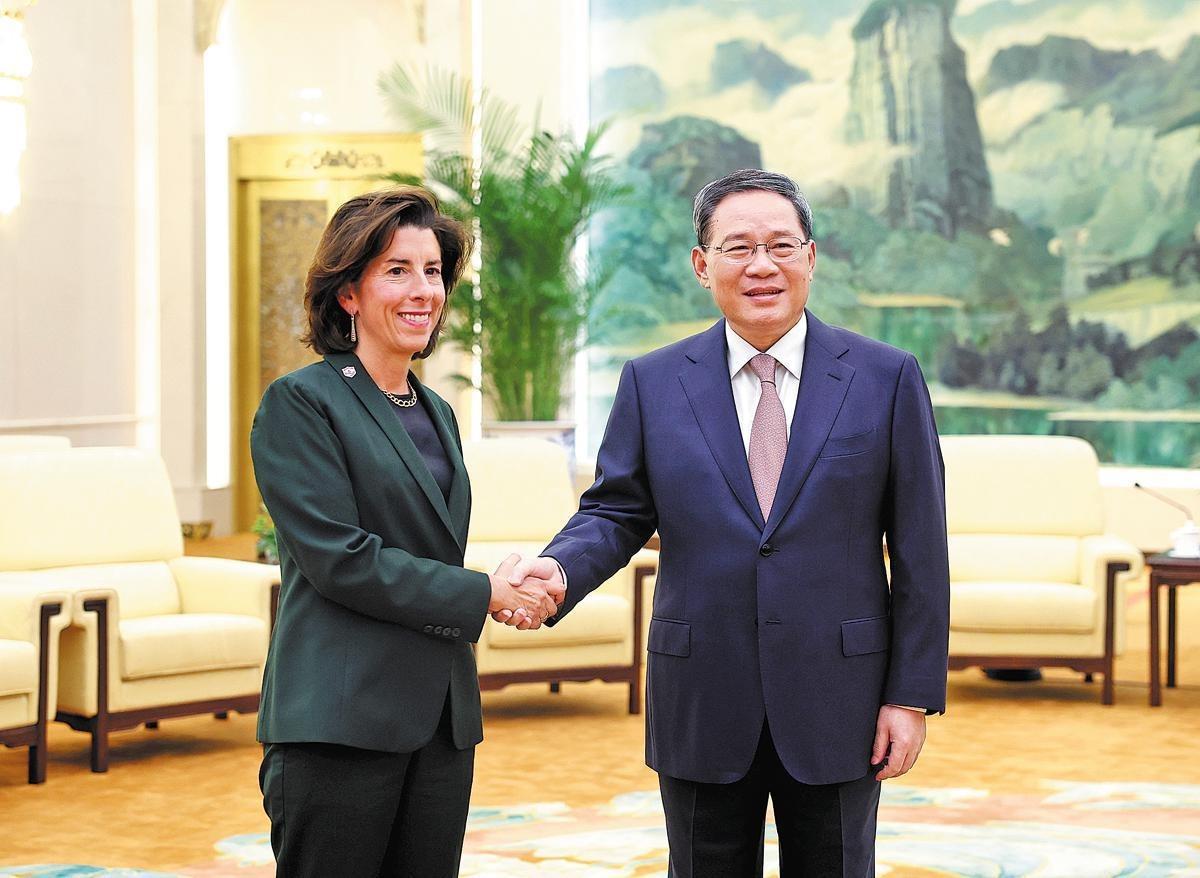 Chinese Premier Li Qiang shakes hands with visiting US Commerce Secretary Gina Raimondo on Aug 29, 2023 in Beijing. (FENG YONGBIN / CHINA DAILY)
Chinese Premier Li Qiang shakes hands with visiting US Commerce Secretary Gina Raimondo on Aug 29, 2023 in Beijing. (FENG YONGBIN / CHINA DAILY)
That the visiting United States Commerce Secretary Gina Raimondo's meeting with Chinese Premier Li Qiang, which had been scheduled as a courtesy call of "10 mins", lasted more than an hour was a clear sign both sides view commercial ties as a way to manage the now wayward bilateral relationship.
As overall relations between the world's two largest economies remain frosty, contact between the two militaries has been suspended, economic and trade ties have been battered by punitive back-and-forth blows, and anticipated cooperation on key mutual and global concerns has stalled, "the plan and the hope is that the commercial relationship, done right, can stabilize the political relationship," as Raimondo said.
Emphasizing that the two sides need to reduce friction and confrontation, Premier Li put his finger on the pressure point that is blocking the flow of vital energy into the two sides' relations. He pointed out that it was the United States' politicizing of economic and trade issues and "overstretching the concept of security" that was seriously harming bilateral relations and mutual trust, and undermining the interests of the enterprises and people of the two countries.
While these exchanges may appear to suggest Raimondo's meetings with Chinese officials in Beijing over the past two days have made limited progress, what has been achieved should not be underestimated. The steps the two sides have agreed upon, such as a joint working group to sort out trade issues and the holding of a "travel and tourism summit" early next year, may seem small, but they can undoubtedly pave the way for more constructive engagement.
This was reinforced by Raimondo and her Chinese counterpart reaching an agreement to "talk informally and as frequently as would be helpful".
But although Raimondo's visit has been portrayed by some as a "bridge-building" one, it is probably better perceived as an effort by the two sides to agree on how a bridge should be built, as the gap between the two governments' expectations is wide.
As the Chinese Commerce Ministry has expressed in explicit terms, Beijing wants Washington to call off "the US Section 301 tariffs on Chinese goods, its semiconductor policies, restrictions on two-way investment, discriminatory subsidies, and sanctions on Chinese enterprises". Washington wants Beijing to create a more predictable regulatory environment and "ensure fair and transparent treatment" for US companies, so as to create "a level playing field for US workers and businesses". But it is Washington's restrictions on technology exports and investment controls, which seek to prevent Chinese companies having access to the latest generation of microchips, that has poisoned the environment for businesses of both countries.
If a bridge is to be successfully built, the US side will need to respond favorably to the hope expressed by the Chinese premier that it will "work in the same direction as China, show sincerity, and take concrete actions to maintain and further develop bilateral relations"



